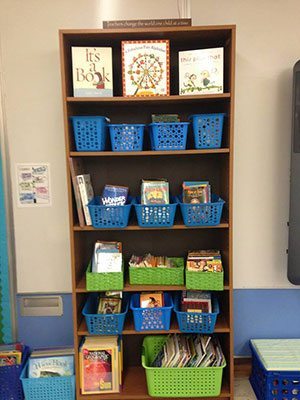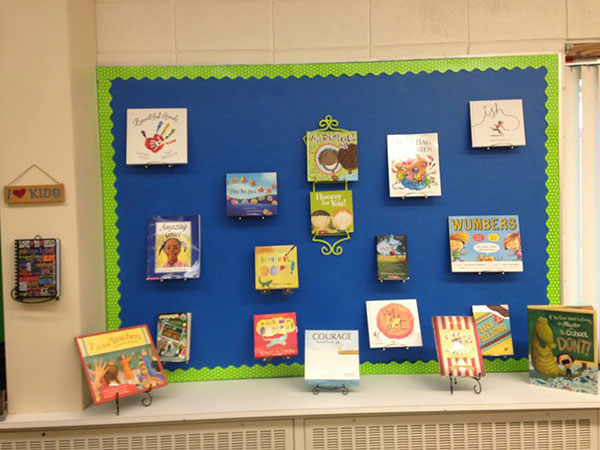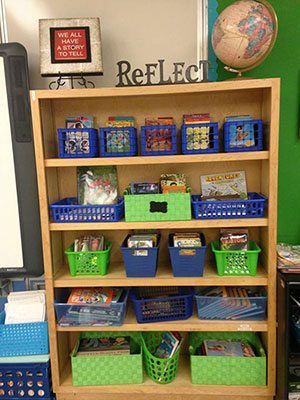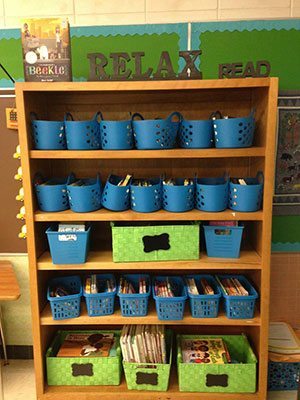 In several past articles I’ve written about the frustration I’ve felt concerning my district’s decision to adopt a new reading curriculum. In recent weeks I have had to reflect and dig deeply to understand my uneasiness and fear related to “an innovative and modern way to teach the gamut of elementary literacy skills” (quote from district website post about the new reading curriculum). I am someone who has never shied away from change or opportunities to grow as an educator. However, this significant shift in the approach to literacy learning and instruction in my classroom (and approximately 660 other elementary classrooms in the district) has contributed greatly to my decision to accept a position with a new school district for the coming school year.
In several past articles I’ve written about the frustration I’ve felt concerning my district’s decision to adopt a new reading curriculum. In recent weeks I have had to reflect and dig deeply to understand my uneasiness and fear related to “an innovative and modern way to teach the gamut of elementary literacy skills” (quote from district website post about the new reading curriculum). I am someone who has never shied away from change or opportunities to grow as an educator. However, this significant shift in the approach to literacy learning and instruction in my classroom (and approximately 660 other elementary classrooms in the district) has contributed greatly to my decision to accept a position with a new school district for the coming school year.
What follows is the letter I am sending to district leaders and school board members in my now former district. My hope is that by sharing this with you, my Teach it Forward readers, and district decision makers, I can respectfully offer something for all of us to think about in hopes of making a positive difference in the lives of our students.
Dear District Administrators and School Board Members,
I believe we have several essential things in common. We care about kids and we want them to succeed. I also believe we share a passion for learning. We aim to do what’s right by our students. We share a sense of urgency. We want to empower our future leaders with necessary skills, experiences, and knowledge. We are intent on making informed decisions and allocating resources wisely.
I applaud the district for its willingness to invest in its kids. A combined $5.3 million for the new reading curriculum, training, and technology is no small expenditure. I know district leaders who supported the curriculum adoption worked countless hours to coördinate the review process, the piloting of materials, and the plan for implementation. For teachers who are new to the profession and have limited experience, this new program offers a detailed overview for each day of the six week units that cover lesson plans for the entire school year, including book selections, alignment to the standards, weekly tests, and interventions. For more veteran educators it delivers a time-saving program that features a fully-integrated curriculum that embeds reading, writing, spelling, and vocabulary, along with a wide range of technology tools.
I’ve spent nine years, more than a third of my 25-year teaching career, in this district. I am a National Board Certified Teacher with a masters degree in literacy and an Education Specialist degree in K‑12 Leadership. My desire to make a positive difference in students’ lives runs deep. However, this letter isn’t about me. It is about the 32 incredible kids from Room 123. It’s about kids who need an advocate who will speak up on their behalf when they are not in a position to do so themselves. I am writing to respectfully ask you to consider some of the insights I have about the district’s recent adoption of the new curriculum.
Here are three things I believe those 32 kids would tell you if they had the chance.

#1. Please let us pick books we want to read along with books we want our teachers to read to us. “One size fits all” does not always feel that great.
Readers thrive on having choice and voice. Kids come to us with a wide range of interests, abilities, backgrounds, and experiences. Providing them with plentiful opportunities to have some say in what they read is critical. Imagine showing up at your public library or favorite bookstore every week for the next six years only to be told that the stories and books with which you will be spending 60 – 90 minutes a day have already been pre-selected for you … would that motivate you to read?
Nancy Atwell, renowned educator and author who is the first recipient of the $1 million Global Teacher Prize, speaks to the importance of offering choice and honoring students’ voice when it comes to reading. She explains:
“We now have a quarter century of studies that document three findings: literacy blooms wherever students have access to books they want to read, permission to choose their own, and time to get lost in them. Enticing collections of literature — interesting books written at levels they can decode with accuracy and comprehend with ease — are key to children becoming skilled, thoughtful, avid readers.”
I encourage you to read what else this accomplished and highly regarded educator has to say about kids, reading, and achievement.
The new curriculum has all the books pre-selected for the entire year. The read-aloud or shared-reading selections are organized by theme to connect with the titles that are shared in small group reading. Each week there are four titles offering four different reading levels to match four different groups of readers. The district website post announcing the new curriculum adoption states: “… they’re [students] reading the same content no matter their reading ability. So students at different ability levels can participate through collaborative conversations and learn from each other.”
Those 32 incredible kids might want to know what happens if one of those four books doesn’t fit (whether that be because of topic, genre, or level)…do they have a say?
 #2. Please know that we don’t all have the same access to technology but that doesn’t mean our families don’t want us to do well or that we need more worksheets to do.
#2. Please know that we don’t all have the same access to technology but that doesn’t mean our families don’t want us to do well or that we need more worksheets to do.
While the new curriculum offers digital at-home access to texts and reading materials, not all students have the same opportunity to use them outside the classroom. Nearly 80% of students at my former school are eligible for Free/Reduced Lunch and almost half are English Language Learners. Close to 90% are students of color. Yes, there is an achievement gap between white and non-white students and yes it must be addressed. Acknowledging that an “opportunity gap” also exists is a step in the right direction.
Those 32 incredible kids might not be able to articulate their feelings about the notion of “equity” but there is no doubt they have felt its absence. They might be wondering how the district will address the issue of equity for students who lack access to technology at home. Will getting a “hard copy” of texts and materials instead of getting to use online tools be enough to provide them with self-directed learning opportunities?
 #3. Please ask and listen to my teachers about how the new curriculum is working in my classroom, at my school (test results are only part of the answer).
#3. Please ask and listen to my teachers about how the new curriculum is working in my classroom, at my school (test results are only part of the answer).
One feature of the new program is weekly assessments, which will provide test-taking practice for students and data for teachers and administrators. While this is one way to measure growth and achievement to aid in planning for instruction, it is not the only thing to consider. The teachers who piloted the program primarily represented non-Title schools in the district. In fact, of the 10 schools (out of 24) selected to participate, only 3 were from the 14 Title schools in the district.
As stated earlier, advocating for my incredible students is my ultimate responsibility and it is the reason I am sharing this letter. It is my hope that the under-representation of Title students and classrooms in the piloting of the curriculum does not signify an indifference to students and teachers who deserve to be included in conversations and decisions about the implementation of the curriculum.
On behalf of those 32 incredible kids I keep talking about, I am happy to report that they are some of the most creative, intelligent, kind and funny kids with whom I have ever worked. Many are bilingual. They write poetry. They play musical instruments. They are artists, athletes, and actors. Most of them believe in themselves and their ability to do and become whatever they choose. Those 32 incredible kids have shared their unique talents, passions, and personalities with me each and every day, some for the past two years. Their desire to read, talk, and write about their favorite characters, authors’ messages, and the things they wonder has been evident, in part because they have been given guidance and freedom to select from the vast collection of books available to them in Room 123.
One final thing those 32 incredible kids might ask is that you never lose sight of the fact that although they might not all be able to demonstrate just how much they know and are capable of doing when it comes to reading and standardized tests, they deal with challenges on a daily basis, challenges that some of us never encounter in our entire adult lives. Don’t let this new curriculum become another challenge. I simply ask that you look beyond the new curriculum to consider what the kids and teachers might need to address the issues of student choice, student voice, equity, achievement gaps, opportunity gaps, and, most importantly, the idea that one size does not fit all when it comes to teaching and learning.
Sincerely,
Maurna Rome
